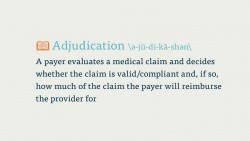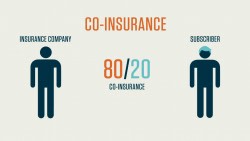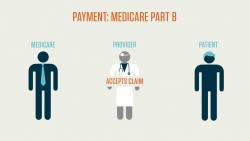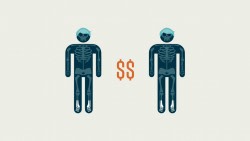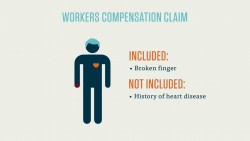Medicare
Created in 1965 with the passage of the Social Security Act, Medicare provides health coverage to American citizens 65 years of age or older, and to citizens with certain debilitating diseases.
The basic principle of whether Medicare does or does not cover a service depends on whether the service is “medically necessary.” This necessity is affected by federal laws, national regulations, and local coverage decisions.
The program itself is divided into four sections, or Parts. It’s easier to understand Medicare when we break it up into these four Parts. Each of these Parts has its own set of monthly premiums, and coverage under these often comes with a fixed deductible as well.
Part A
Part A is confined mostly to inpatient services. This coverage may extend from overnight stays based on pressing medical concern all the way to hospice care and other long-term stays in a hospital or nursing facility. In order to contain costs and encourage higher quality healthcare, Part A comes with a number of restrictions and criteria. For instance, if a patient needs to return to a hospital within 30 days for an identical procedure, Medicare will not pay the provider for this service.
Part B
Part B provides medical insurance for procedures and services not covered in Part A. This includes physician services like x-rays and some kinds of nursing care, along with durable medical equipment like canes and walkers (which you may remember from HCPCS). Along with Part A, Part B of Medicare makes up the basic Medicare coverage package.
Part C
Also known as the Medicare Advantage plan, Part C allows Medicare subscribers to receive the entirety of their coverage through a private organization. Medicare Advantage is offered by private HMO and PPO organizations. Subscription to Part C does not require subscription to Parts A and B. Under the Medicare Advantage, the federal government reimburses the private payer, and no claims are filed to Medicare under this program.
Part D
The most recent addition to the Medicare, Part D was instituted after the Medicare Prescription Drug, Improvement, and Modernization Act of 2003. Part D provides coverage for prescription drug costs during healthcare. Patients must actively enroll in Part D (and thus pay its monthly premiums) if they are to receive coverage from this portion of Medicare.
In order to qualify for Medicare benefits, a person must be: 65 years of age; a United States citizen; and be enrolled in Social Security. Medicare makes exceptions for persons under 65 with end-stage renal failure (which requires regular dialysis treatment), and persons under 65 who have other certain disabilities or illnesses (like Lou Gehrig’s Disease).
Medicaid
Medicaid is a joint state and federal healthcare program that provides care to persons who might not otherwise be able to afford it. Medicaid provides coverage to low-income families and individuals, disabled individuals, and certain elderly persons.
Unlike Medicare, which is a federal program with universal standards, Medicaid regulations and restrictions vary by state. Each state has to maintain its own Medicaid program (like California’s Medi-Cal or Wisconsin’s BadgerCare). Each of these state-based Medicaid programs still has to meet certain standards established by the federal government, but you should expect to see a wider range of variation in Medicaid policies than Medicare policies.
Since some states’ Medicaid coverage is more extensive than others, let’s focus only on the minimum requirements for the program, as laid out by the CMS and the federal government. Below you’ll find seven of the basic services covered by Medicaid.
- Family planning care
- Prescription drug costs
- Inpatient/outpatient hospital services
- Pediatric services
- Mental health care
- Occupational, speech, and physical therapy
- Dental healthcare and related service
Like the services provided by Medicaid, a person’s eligibility for Medicaid may vary by state. Still, there are some relatively common baseline criteria for coverage, including:
- Adults with children earning less than a certain income level (varies by state and number of children)
- Individuals earning up to 133% of the poverty line (this provision is part of the Affordable Care Act, and will go into effect in January of 2014)
- Individuals who earn slightly more than the minimum threshold, you may still qualify for Medicaid if they pay an additional premium
- Individuals suffering from chronic disabilities
- Individuals who receive Social Security benefits may also qualify for Medicaid
These are not hard and fast criteria for enrollment. Medicaid accepts subscribers on a categorical level. That is, their income is not the sole determining factor of their eligibility. Instead, a patient’s eligibility depends on how they fit into a certain category, which might include pregnant or nursing mothers, poverty-stricken individuals, or disabled persons.
Like Medicare, Medicaid acts as a third-party payer that reimburses providers for the health services they perform. Unlike Medicare, a majority of Medicaid subscribers are enrolled in some sort of managed care program through Medicaid. Under this program, subscribers must pay a monthly premium. Poorer elderly individuals are more likely to use the basic fee-for-service Medicaid program, while younger Medicaid recipients are more likely to use the managed care option.
Those are the bare bones of Medicare and Medicaid. In the next Course, we’ll show you how medical billers bill to Medicare and Medicaid.


